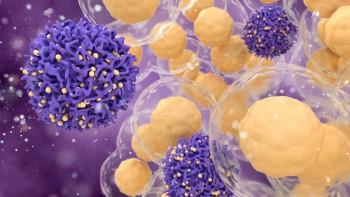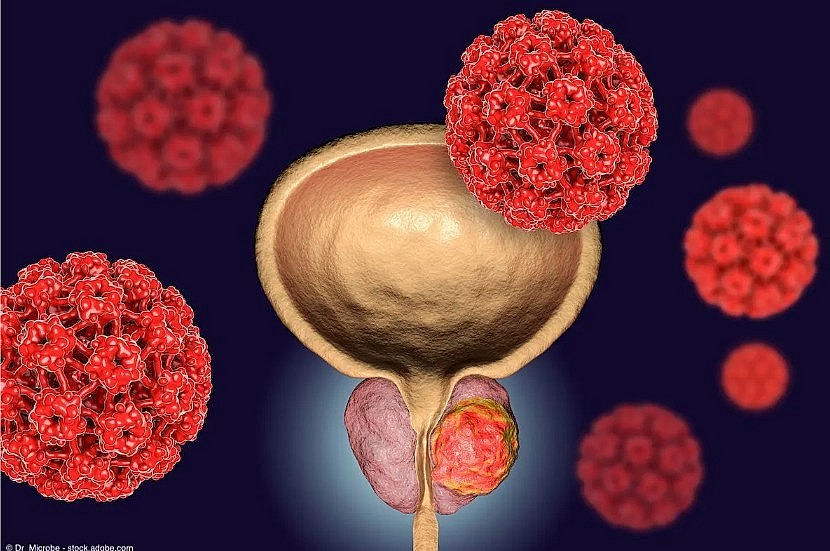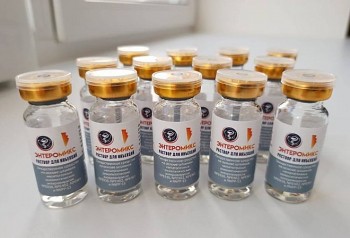What is Talazoparib? The New Hope in Stage 4 Prostate Cancer Treatment - Like Joe Biden
 Top 6 SuperFoods That Can 'Starve' Cancer Top 6 SuperFoods That Can 'Starve' Cancer |
 Facts About Nanodrones or Nanobots That Can Treat Cancer Facts About Nanodrones or Nanobots That Can Treat Cancer |
 |
| Former U.S. President Joe Biden has been diagnosed with end-stage prostate cancer. |
Prostate cancer is the second leading cause of cancer-related death in men. When it advances to stage 4 and spreads to the bones, survival rates drop sharply — and treatment options become severely limited. But a new class of targeted therapies is offering a critical breakthrough. At the center of this revolution is talazoparib, a PARP inhibitor showing remarkable promise in patients with aggressive, treatment-resistant prostate cancer.
Joe Biden’s Prostate Cancer: A Wake-Up Call
Former President Joe Biden reportedly began experiencing urinary symptoms, a common but often ignored sign of prostate issues. A subsequent medical exam revealed a small nodule in the prostate. Biopsy results confirmed a Gleason score of 9, indicating an aggressive, high-grade tumor. Further analysis showed the cancer had already spread to the bones — a defining characteristic of stage 4 metastatic prostate cancer.
His diagnosis reflects a pattern many men face: late detection, rapid disease progression, and limited traditional treatment options.
What Is Talazoparib? A Targeted Therapy for Prostate Cancer
Talazoparib (marketed as Talzenna) is a PARP inhibitor, a type of targeted cancer drug that interferes with the tumor’s ability to repair damaged DNA. Unlike chemotherapy, which affects both healthy and cancerous cells, talazoparib targets a specific weakness in certain tumor types.
How It Works
Cancer cells with mutations in BRCA1, BRCA2, PALB2, or ATM genes already have compromised DNA repair systems. Talazoparib blocks the PARP enzyme, further disrupting the repair process. As a result, DNA damage accumulates and the cancer cell dies. This approach is especially effective in tumors with DNA repair gene mutations — commonly seen in advanced prostate cancer cases.
 |
| FDA approves talazoparib plus enzalutamide for HRR gene–mutated mCRPC |
Clinical Trial Results: Why Talazoparib Matters
TALAPRO-1 Study
Conducted by Professor Johann de Bono at the Institute of Cancer Research, the TALAPRO-1 study examined talazoparib in over 100 men with metastatic castration-resistant prostate cancer (mCRPC). These patients had already undergone chemotherapy and hormonal therapy.
Key findings include:
-
A 46% response rate in patients with BRCA2 mutations
-
A 50% response rate in those with BRCA1 mutations
-
Tumor control also observed in patients with PALB2 or ATM mutations
-
Disease progression delayed by an average of 11.2 months in BRCA-mutated cases
These results mark a significant step forward in treating prostate cancer driven by genetic mutations.
TALAPRO-2 Study
The ongoing TALAPRO-2 trial evaluates talazoparib in combination with enzalutamide, an androgen receptor inhibitor. Early results suggest:
-
A 20% reduction in overall mortality risk
-
Improved outcomes even in patients without BRCA mutations
-
Better quality of life and longer progression-free survival
The Role of Genetic Testing
The effectiveness of talazoparib depends on identifying patients with the right genetic profile. Men diagnosed with prostate cancer — particularly those with metastatic or resistant forms — should undergo genetic screening to detect mutations in BRCA1, BRCA2, PALB2, ATM, and other DNA repair genes.
Personalized medicine relies on this critical step to ensure that treatments like talazoparib are matched to the right patients.
Talazoparib vs. Chemotherapy: A Safer, More Targeted Option
| Feature | Talazoparib | Chemotherapy |
|---|---|---|
| Targets cancer-specific DNA mutations | Yes | No |
| Minimizes damage to healthy cells | Yes | No |
| Severe side effects | Rare | Common |
| Form | Oral pill | Intravenous |
| Tolerability | Generally well tolerated | Often poorly tolerated |
Talazoparib is associated with fewer side effects compared to chemotherapy. The most common is anemia, which is manageable in most cases. Importantly, very few patients discontinue treatment due to side effects.
Is Talazoparib Right for Joe Biden and Other Stage 4 Prostate Cancer Patients?
If Joe Biden’s tumor harbors mutations in BRCA or related genes — a plausible scenario given the aggressiveness of his cancer — talazoparib could be a key therapeutic option. It has already demonstrated benefit in men who have undergone chemotherapy and hormone therapy.
As TALAPRO-2 expands the scope of treatment beyond just BRCA-mutant cases, talazoparib may soon be considered for a broader population of stage 4 prostate cancer patients.
Conclusion: A New Era in Prostate Cancer Treatment
Talazoparib is more than a new drug — it represents a paradigm shift in how we treat advanced prostate cancer. By targeting tumors based on genetic vulnerabilities, it offers personalized, more effective care with fewer side effects.
In the context of President Biden’s diagnosis, talazoparib symbolizes hope — not just for a high-profile patient, but for the thousands of men every year who face this aggressive disease.
Frequently Asked Questions (FAQs)
1. What is talazoparib used for?
Talazoparib is a targeted cancer therapy approved for breast and prostate cancers associated with BRCA or similar gene mutations. It is used especially in advanced or metastatic cases.
2. Is talazoparib a form of chemotherapy?
No. Talazoparib is not chemotherapy. It is a PARP inhibitor, which selectively kills cancer cells with defective DNA repair genes, sparing most healthy cells.
3. Who qualifies for talazoparib treatment?
Patients with BRCA1, BRCA2, PALB2, or ATM mutations, especially those with metastatic prostate cancer who have undergone other treatments, are potential candidates. Genetic testing is required to determine eligibility.
4. What are the side effects of talazoparib?
The most common side effect is anemia. Other side effects may include fatigue or low white blood cell counts, but these are typically mild and manageable.
5. Can talazoparib help if I don’t have BRCA mutations?
Emerging research (TALAPRO-2) suggests that talazoparib may benefit patients without BRCA mutations when used in combination with other therapies, such as enzalutamide.
6. How is talazoparib taken?
Talazoparib is taken as a once-daily oral pill, making it more convenient than traditional intravenous treatments.
 Facts About Nanodrones or Nanobots That Can Treat Cancer Facts About Nanodrones or Nanobots That Can Treat Cancer Researchers have effectively created "drones" the size of nanoparticles that can be introduced into cells to eradicate cancer. To learn all the specifics, read the ... |
 Destroys 99% of Cancer Cells Using 'Molecular Jackhammer' or 'Vibrating Molecules' Destroys 99% of Cancer Cells Using 'Molecular Jackhammer' or 'Vibrating Molecules' A group of scientists in North America have used a novel medical technique known as the 'molecular jackhammer' or 'vibrating molecules' to eradicate 99% ... |
 What is Russian cancer vaccine: A game-changing development for 2025 What is Russian cancer vaccine: A game-changing development for 2025 The Russian cancer vaccine currently under development represents a monumental step in medical science, targeting some of the deadliest and hardest-to-treat cancers, including melanoma, pancreatic ... |
 Can Russia’s Vaccine Truly Prevent Cancer? Can Russia’s Vaccine Truly Prevent Cancer? Russian scientists have announced a major development: a potential cancer vaccine that will enter human trials in 2025. |























